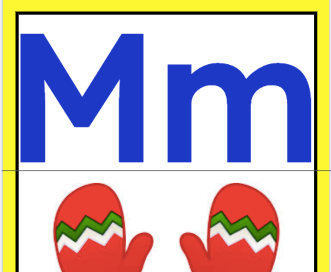This will be a quick post about the order in which I’m teaching letter names/sounds this year. Some of you asked, so here you go!
Note: In past years, I have always taught the letters/sounds in alphabetical order.
Another note: There is no “best” order to teach letter names/sounds, according to the research. There isn’t even a recommended order. There are, however, other recommendations.
From everything I’ve read and learned, we should:
introduce “high utility” letters first (i.e., letters that the kids can use right away to start blending and using for spelling, letters like m, a, t, n, i, s);
introduce continuants first (sounds that can be held, like m, a, s, f, l) because they’re easier to blend;
separate letters that are often confused (i.e., b and d, p and q, which just so happen to be very close together in the alphabet, meaning that I have not been separating them);
try to teach two or three letters/sounds each week so students are exposed to all of them sooner rather than later.
These are things to keep in mind; you do not necessarily have to do them. If you have a program to follow, follow it, but consider optional ways of teaching your program’s content or modifying the pace of introducing letters. If you have another way of doing things that seems to work, continue on with it. Or, for a little classroom research of your own, try something new.
My classroom research tells me that it is easier for students to learn how to make letter sounds and learn to blend them when the first sounds to be introduced are sounds that have an obvious mouth position and/or memorable sound. For example, the first two sounds I teach are /m/ (lips together is an easy mouth position and it’s the sound we make when we taste yummy food) and /o/ (big circle mouth, I tell them, and it sounds like singing or the sound they make when they go to the doctor). Then /z/ (it’s easy because it sounds like the letter name and sounds like a zipper or an insect and it may not be high utility but it’s easy to use for blending short nonsense words) and /i/ (a great one for focusing on the mouth when I tell them “corners back, like you’re smiling”). I want students focusing on their mouths from the very beginning of the kindergarten year. Next come the letters b, u, s, c, a, t, p, r, e, d, h, n, g, y, k, w, l, f, j, q, v, x. Again, the order is not that important; what is important is steadily introducing the letter names and sounds and letting students use them almost immediately to practice blending two-letter words.
I incorporate phonemic awareness with each sound being taught and review all previously taught letters/sounds every day. I also incorporate the current phonics and review phonics into the small group instruction each day.
To get a general idea of what my phonics time looks like and how I incorporate phonics throughout the school day, ask for my Phonics Scope and Sequence. It has so many links in it, the most useful probably being the links to videos of me teaching phonics in the classroom. You can get my alphabet cards, advanced phonics cards, and lists of words to use for phonemic awareness practice for each letter of the alphabet there, too. I also have a document that explains the order in which I introduce letters and why and all the actions I teach kids to help them remember the sounds and learn to blend. These—and so much more—are available with a paid subscription, as well as consultation, if you need any!





Hi there, could I see your phonics scope and sequence? Thank you!
Absolutely! I'll share it with you. And if you have any questions, please don't hesitate to ask.